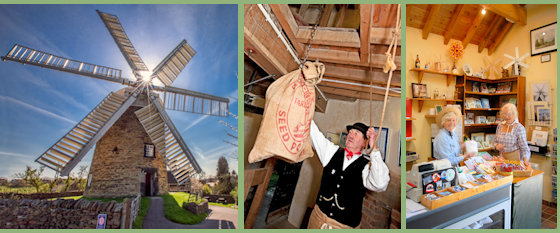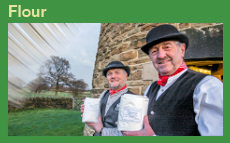Milling Flour
Flour is the result of milling (by whatever process) the grains of the wheat plant. In earlier times, types of flour for bread making were produced from rye, barley, oats and peas. In some parts of the world some of these ‘flours’ are still made and used; the Germans make a considerable amount of rye bread.
Two obvious differences are found when examining flour. There is white and brown flour available. White flour is made from the same wheat as brown flour; the difference is that the white flour has had some portion of the wheat removed during milling. It may also have had other things added at that time.
In commercial milling it is possible to produce a large variety of flours by altering the blends of the types of wheat used in the mill and also by extracting the flour at different points in the milling process. However, this is difficult in the traditional mill. Additionally each miller has differing names for the various flours, thus making a certain difficulty for the baker wishing to change supplier, as he will then have to experiment to find a suitable matching type.
Extraction rate
This term is used by millers to indicate the amount of flour extracted from the wheat. 100% extraction produces wholemeal flour.
White Flour
White flour results from the separation made during the milling process and sometimes the blend of different wheats. White flour typically has an extraction rate of 72% i.e. 100 kg of wheat produces 72 kg of white flour. The remainder is bran and wheatgerm,
Brown Flour
Wholemeal – (sometimes called wholewheat) – this is the flour produced when the whole of the wheatgrain, bran, endosperm and germ are milled and thus nothing is removed. It should, however, be noted that much commercial wholemeal flour is made by first making white flour (complete with all its additives) and then adding the bran and germ back into the product. Brown is a current term used to describe wheatmeal flour.
Hovis – this is a trade name (belonging to Rank Hovis McDougall) for a white flour that has had concentrated wheat germ added to it. The germ is said to be prepared for blending with the flour by being cooked with salt.
Granary – this is the proprietary name of a blend of wheatmeal, rye flour and pieces of malted wheat grain. It produces bread with a sweetish taste and slightly sticky texture.
Organic – flour milled from wheat grown and processed naturally without the use of chemicals. There are official bodies who approve the use of the term “organic” and whose seal may then appear on the bag of approved flour.
Heage Flours
The flour we produce at Heage is made from organic wheat and we offer it in five forms: Wholemeal – just as the meal comes off the stones; White Flour, after sieving; Middlings; Coarse Brown; and Bran, the latter three being the residue from the separation of wholemeal when we make white flour. This flour is produced entirely at the mill and is 100% stone ground.













